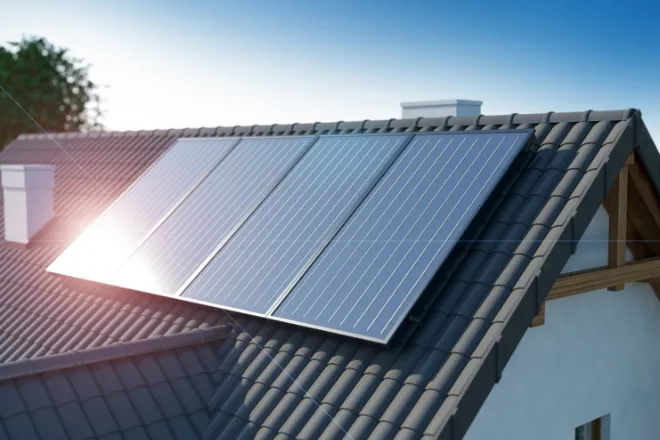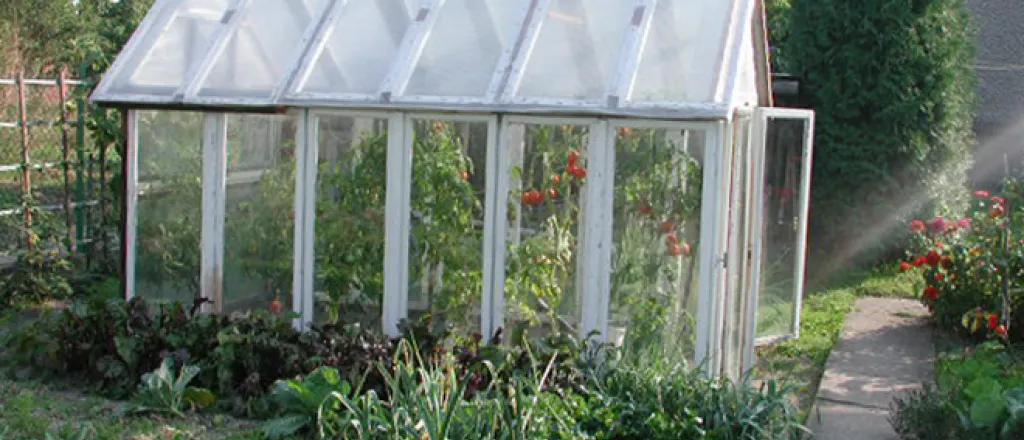
Growing the big one – 6 tips for your own prize-winning tomatoes
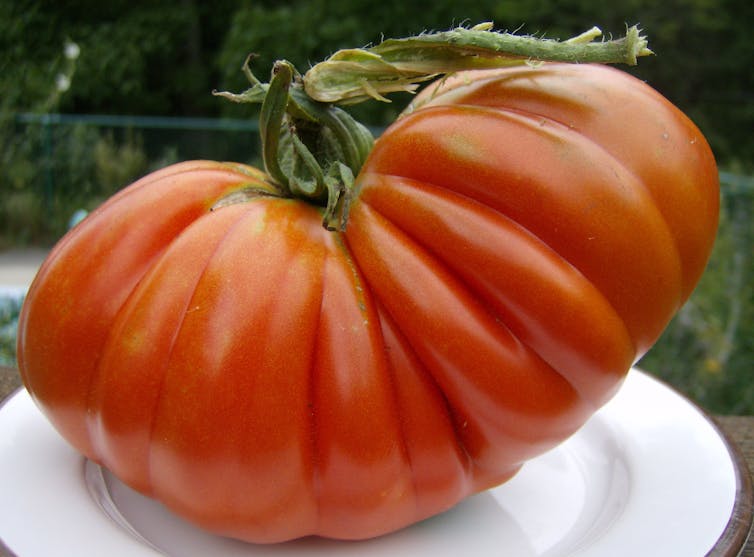
Richard G. Snyder, Mississippi State University
When I answer my office phone as an extension vegetable specialist, from time to time it’s someone asking how they can get recognition for growing a huge tomato, possibly the biggest one ever. When I ask how big a tomato we’re talking about, and the caller says 2 or 2.5 pounds, I have to hold back my laughter and gently explain that that is nowhere even close to a record.
So just how big is big? Growers in various states have set various records – New Jersey was home to a 6-pound, 2.5-ounce tomato, Oklahoma has boasted a 7-pound, 12-ounce one and Minnesota weighed in at 8 pounds, 6 ounces. According to the Guinness Book of World Records, Dan Sutherland of Walla Walla, Washington is the current tomato king, having produced a tomato tipping the scale at 8 pounds, 9 ounces in 2016.
If you take that as a challenge to your own tomato-growing prowess, read on for tips on how to nurture a massive tomato. The secrets are really nothing too obscure. What’s important is checking off as many boxes as possible to optimize the fruit size. Each step is attainable for the home gardener, but missing out on certain ones will limit your results.
Pick a proven pedigree
Are some varieties better for fruit size? Absolutely. The best way to determine which ones to use is to look at previous winners. Genes are important.
A cherry, grape or plum tomato plant isn’t going to yield a winner. Some varieties have a genetic potential to produce larger fruit than others, including Beefsteak, Delicious, Big Beef, Big Rainbow, Dinner Plate, Giant Belgium, Big Pink, German Johnson, T & T Monster, Braggar and Brandywine, among others. All of these big boys are in the category of beefsteak tomato – they have smaller seed cavities than other varieties, and so proportionally more flesh than juice and seeds.
Since it would be hard to find plants of most of these at your local garden center, you will likely have to order seeds from seed catalogs and start your own plants.
There’s no guarantee that a plant of one of these varieties will be a winner. Although the potential for large size is in the genes, it will not be achieved unless the environmental conditions are optimized. And by that, I mean perfect.
Super soil
One of the most important tips is to start with great soil. All plants, not just tomatoes, will do much better if planted in properly prepared soil. The soil should be well drained, high in organic matter and fertile.
Tomatoes thrive on animal manures. So if you have access to some composted (not fresh) manure, you might place some in the bottom of the hole and then cover it up before transplanting your seedling. This is a tried and true method for lots of old-time tomato growers.
A place in the sun
Like most vegetables, tomatoes need full sun. Anything less will decrease maximum photosynthesis, thereby limiting growth of foliage and fruit. A tomato plant needs lots of leaves to catch as much sun as possible, manufacture sugars and send those sugars to the developing fruit. They also don’t mind the heat (up to a point), so long as there is plenty of water in the root zone to keep them from drying out.
When the temperature gets into the mid 90s or above, that’s when trouble can occur. Tomato pollen is sterilized at 94 degrees Fahrenheit, so even if pollination occurs and pollen makes it from the male to the female parts of the flower, there won’t be much fertilization since pollen has been killed. So higher temperatures limit fruit set: the transformation of flower into fruit. Fruit quality and size will also suffer at very high temperature.
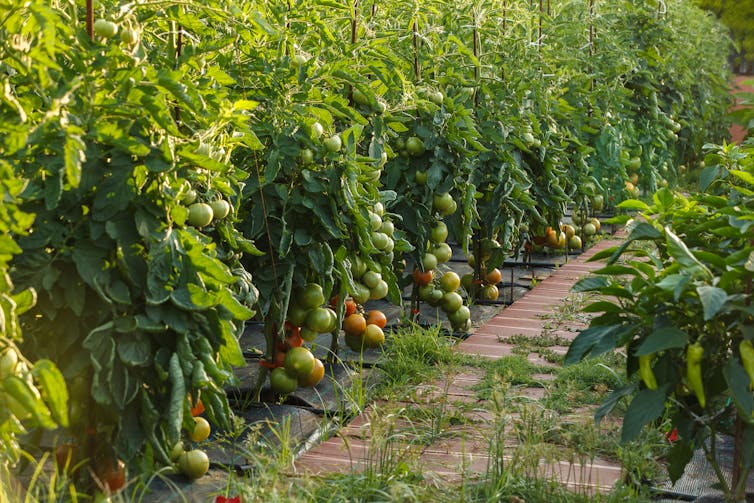
Space to spread out
Tomatoes need plenty of room to grow. Commercially, most growers use a two-foot spacing within rows. If you want really large fruit, give them even more room. One of the most common errors by novice gardeners is planting tomato plants too close together. If you are just going for size, you need only a few good, healthy plants, with plenty of space around them.
Training plants to grow off the ground is a good idea to protect the quality of the fruit. Caging and staking are both fine. Just be sure to tie them frequently enough to support the plants. If you choose cages, you will need a mesh that is big enough to get your hand in, and to get that enormous tomato back out.
Hydrated and well-fed
Tomato plants need plenty of water, especially in hot weather, but will suffer if the ground stays saturated. As a rule of thumb, an inch and a half of water per week, from hose or from rain, is about right. The soil must be able to drain this water within a reasonably short time.
Be sure to water the plants thoroughly right after transplanting. After plants are established, always water deeply, once or twice per week, rather than giving them a light sprinkle every day; shallow watering leads to shallow roots. A good, thick mulch will help hold moisture in the soil around plants and also keeps the weeds down.
As for fertilizer, tomatoes need regular doses. Small, weekly amounts are better than large pre-plant amounts and one or two side-dressings. Liquid fertilizer is more quickly available to plants than granular forms. Some people like to use fish emulsion or “manure tea,” but any complete garden fertilizer will work.
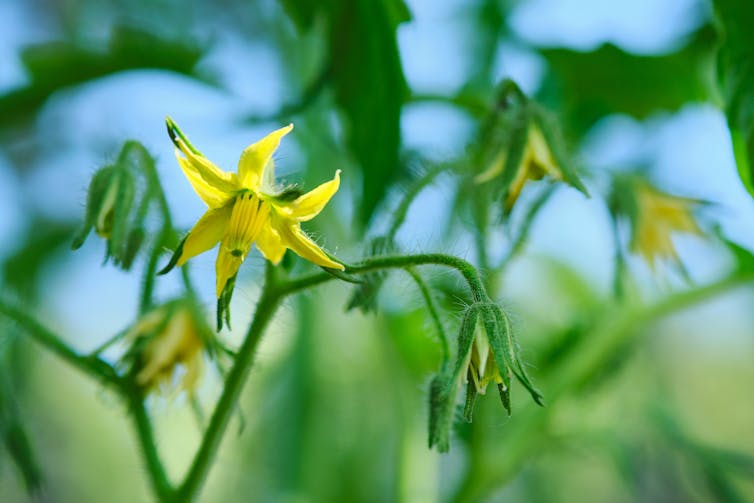
Focus on one flower
One other tip, and this is important. Remove the first flower cluster or two so that the plant will produce more leaves before you allow it to set tomatoes.
Then, when the plant is big enough to set fruit, don’t let all of the fruit mature. Remove all but one fruit per cluster. Usually the first fruit to set on a cluster will be the largest, so snip off all of the other flowers or small fruit on that cluster. And don’t let too many clusters stay on the plant either.
Prepare for prize-winning

Once you’ve got your jumbo beauty, what about that big money? Start by looking for local, county or state contests. Ask your State Department of Agriculture or County Extension Agent.
Good luck and remember to think big. The record continues to be broken every so often, which tells you that the upper limit has still not been found.
And if you just don’t have much luck growing gargantuan tomatoes, console yourself with the knowledge that while these techniques maximize for size, they do not maximize flavor. When plants get too much water, for example, the fruit can be bland. Your more average-sized tomatoes may be more delicious at the table.
[ You’re smart and curious about the world. So are The Conversation’s authors and editors. You can read us daily by subscribing to our newsletter. ]![]()
Richard G. Snyder, Professor of Horticulture & Extension Vegetable Specialist, Mississippi State University
This article is republished from The Conversation under a Creative Commons license. Read the original article.





